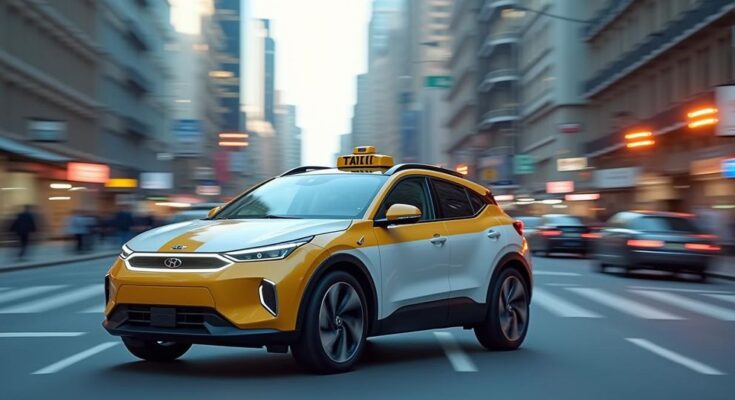Robotaxis, despite technological advancements, face significant profitability challenges that impede their deployment. Leading firms like Waymo operate in limited markets, revealing a model that predicts substantial financial losses per vehicle. High costs associated with vehicle technology, personnel, insurance, and maintenance culminate in an unsustainable business model. The path to widespread AV integration requires overcoming these economic hurdles, as the industry continues to evolve amidst safety and financial constraints.
In the realm of autonomous vehicles, the alluring promise of robotaxis glimmers like a distant star on the horizon, yet many challenges loom large. While the technology is steadily evolving, the underlying economics paint a less rosy picture. Despite advancements, robotaxis face staggering profitability hurdles that could significantly slow their deployment across urban landscapes. Waymo, a pioneer in this field, operates the largest autonomous vehicle service in the U.S., spanning four cities and covering a mere 462 square miles. This is but a drop in the ocean compared to the vast 3.8 million square miles of the country. A recent exploration into the profitability of robotaxis sheds light on their daunting financial realities, revealing a staggering loss of approximately $286,000 per vehicle over its lifetime. To forecast revenue, we draw comparisons with traditional ridesharing drivers. Assuming an AV operates a total of 100 hours each week, it could generate up to $260,000 in yearly revenue. However, with an average life expectancy of only 2.88 years and 300,000 miles, even the optimistic revenue projections yield only $748,800. The costs of operating these sophisticated machines are colossal. The vehicles themselves, laden with cutting-edge sensors and technology, can stretch beyond $200,000. Then there are personnel expenses; a robotaxi typically requires 1.5 staff members, racking up costs that can exceed $756,864 over its effective lifespan. Additional expenses like charging, insurance, and maintenance further compound the financial burden, painting a dismal picture of profitability. Charging alone adds another $36,000 due to the vehicle’s energy consumption, while insurance and maintenance costs run up to $24,000 and $18,228, respectively. Each of these expenses is a weighty boulder on the path to profit, leaving operators with a net loss of up to $34,000 per vehicle even under the best conditions. Ultimately, these economic realities could stall the wide-scale adoption of robotaxis, a technology that promises to revolutionize transportation. The once ambitious dreams of fleets of self-driving vehicles zipping through city streets now face the stark truth of an industry still wrestling with fundamental profitability questions.
The deployment of autonomous vehicles (AVs), particularly in the form of robotaxis, has encountered significant delays primarily due to safety concerns and technological maturity. Beyond these challenges lies another thorny issue – the lack of profitability associated with operating AVs as ride services. Companies like Waymo, despite making strides in technology and operations, illustrate the limitations faced by AVs. The economic model for robotaxi operations reveals stark realities about costs, revenue streams, and the intricate balance required to turn a profit. The analysis of various components such as vehicle cost, personnel expenses, charging costs, insurance, and maintenance highlights why, despite the technological advancements, AVs remain far from being a financially viable transportation option. Understanding the comprehensive financial analysis sheds light on the broader implications for the future of urban transportation and the viability of autonomous driving as a mainstream service.
In summary, the profitability of robotaxis remains a formidable challenge that can jeopardize their deployment across urban terrains. As autonomous technology continues to advance, the economic structures surrounding AV operations must also adapt. With operating expenses outpacing revenue generation, companies are left contemplating harsh realities. While the promise of safer streets, reduced transportation costs, and increased electric vehicle adoption remains tantalizing, the journey toward a sustainable, profitable robotaxi model is fraught with obstacles that demand innovative solutions and strategic thinking. As the industry moves forward, it is essential for stakeholders to grasp the interplay between technological advancements and their economic implications, setting the stage for the next chapter of autonomous transportation.
Original Source: www.forbes.com



